Green high-rise buildings ensure healthy living space and environmental benefits
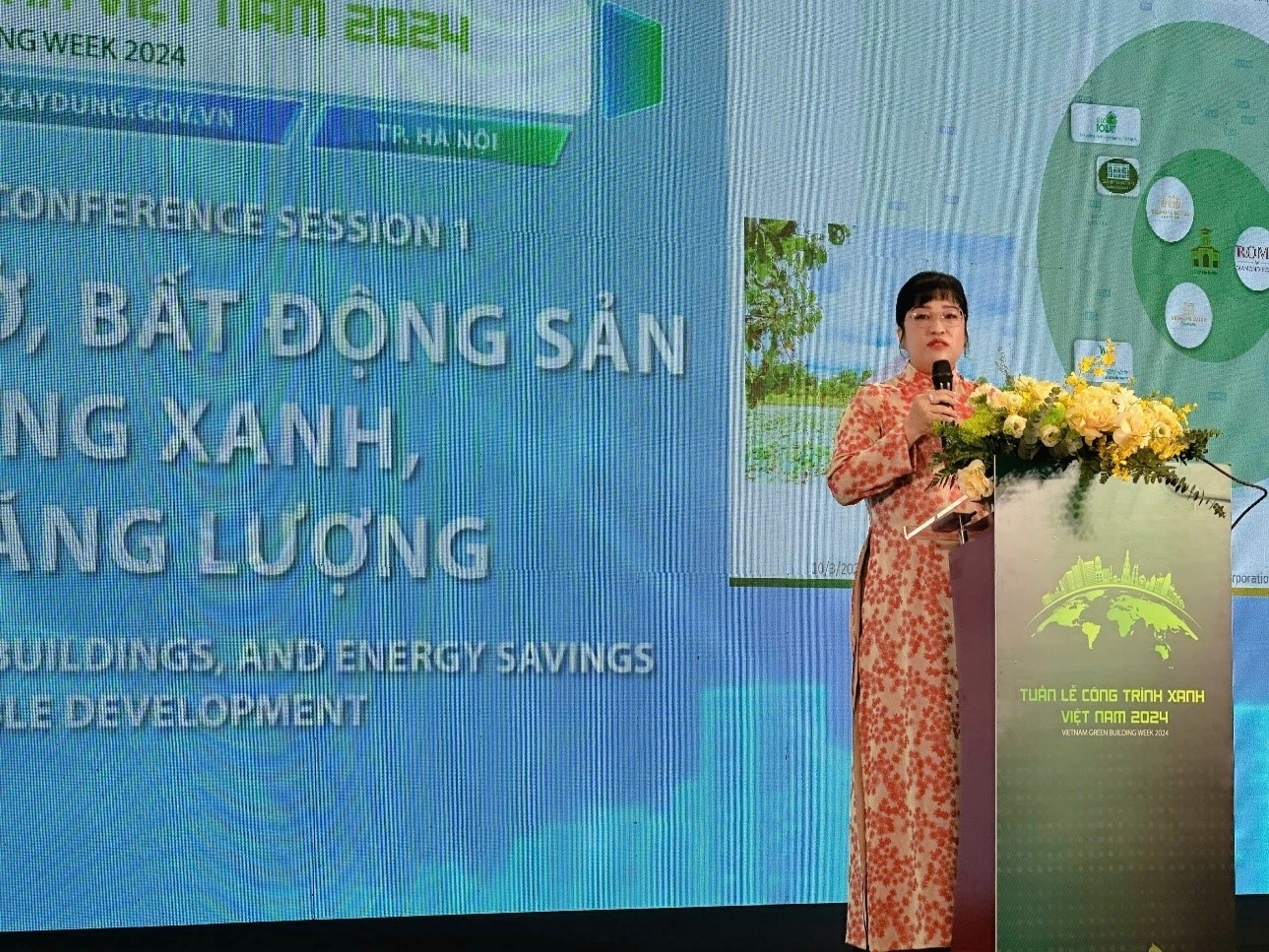 |
| CEO Luu Thi Thanh Mau during a discussion session at Vietnam Green Building Week 2024. Photo Phuc Khang |
At the Green Building Week 2024, Luu Thi Thanh Mau, CEO of Phuc Khang Corporation made a presentation.
She highlighted high-rise buildings in line with green building standards that ensure minimal or no impact on the environment and resident health. She cited data from the Diamond Lotus Riverside in Ho Chi Minh City to illustrate the development of such buildings.
Green Building Week 2024 is taking place from October 3 to 4, attracting 1,000 representatives from ministries, departments, and leading local and international businesses. It is a major annual event held by the Ministry of Construction (MoC) to realise Decision No. 280/QD-TTg from 2019 on approval for a national programme for efficient use of energy.
The programne includes one plenary session, four thematic seminars and one exhibition of green products and works in the construction sector such as: Green, ecological, energy-saving materials; introduction of investors and businesses; introduction of construction technology, green project management models.
Green high-rise buildings ensure environmental benefits
Nguyen Duc Vinh, deputy head of the Department of Social Housing Management and Development, Department of Housing and Real Estate Market Management, cited Decision No. 2161/QD-TTg dated December 22, 2021, on approving the National Strategy on Housing Development 2021 – 2030, with a vision towards 2045 that sets targets of ensuring living space and environmental benefits.
“Since 2021, the prime minister has assigned the MoC to develop incentive policies to encourage the development of social housing in line with the green model, energy efficiency, sustainable development, and low carbon emissions,” Vinh said.
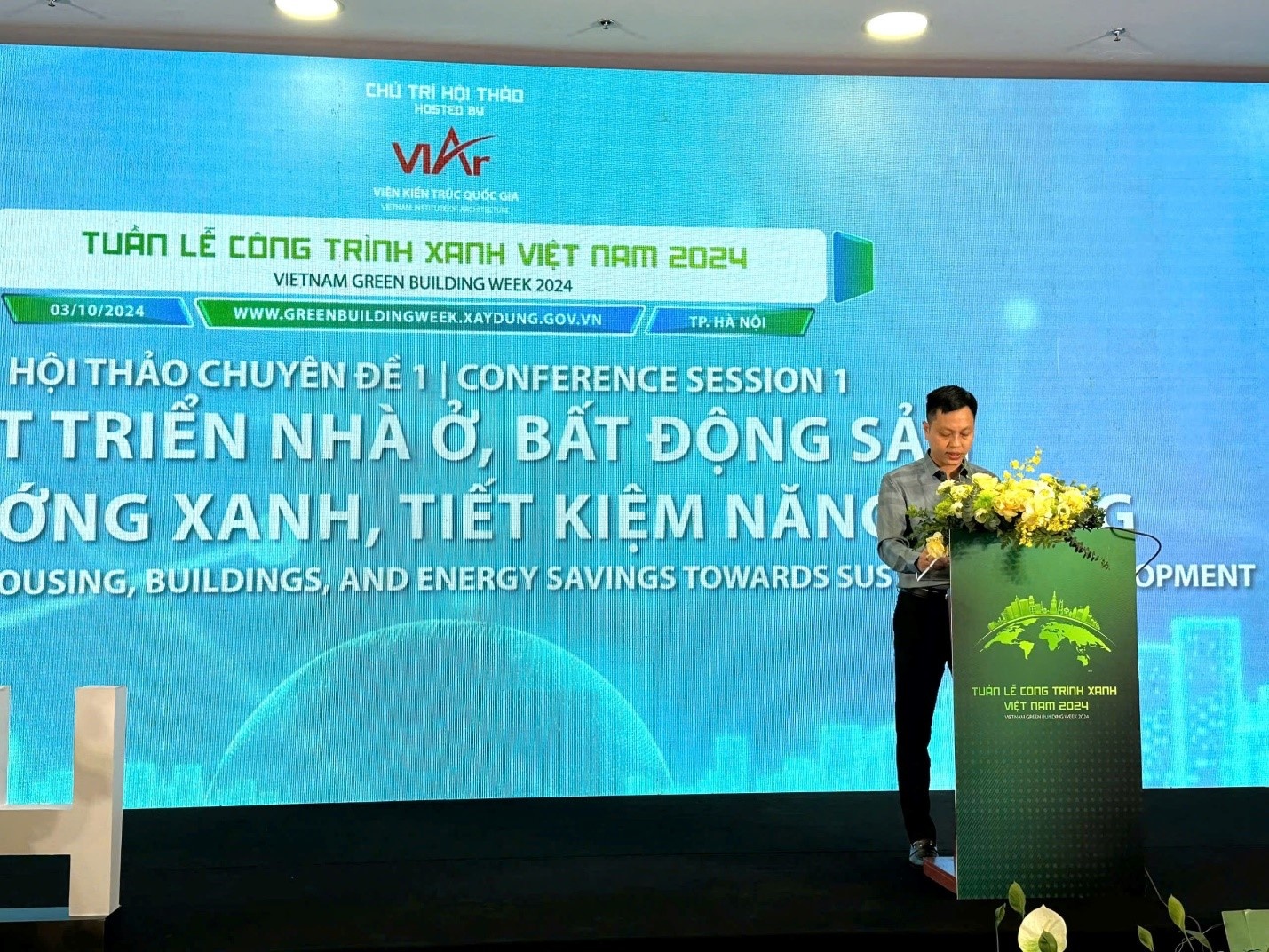 |
| Nguyen Duc Vinh, deputy head of Social Housing Management and Development Department, Department of Housing and Real Estate Market Management. Photo Phuc Khang |
Diamond Lotus Riverside is one of the typical examples that the MoC and experts have visited to verify the quality of living space and environmental benefits.
CEO Luu Thi Thanh Mau said Diamond Lotus Riverside was Vietnam’s first high-rise apartment building to achieve both LEED and LOTUS gold-level green building certification. The project covers an area of 16,800 square metres, of which only 19 per cent is used for construction.
40 per cent of the land is reserved for landscape and greenery to preserve the natural ecosystem and biodiversity. Half of the roof area is planted with greenery to reduce heat accumulation and the heat island effect in urban areas. For 90 per cent of the usable area, the project is designed with clear visibility so that residents admire the outside landscape like the river. This helps reduce electricity demand during the day.
To ensure the quality of living space and environmental benefits according to green building standards, the project uses a solar energy system to provide electricity to public areas, minimising dependence on traditional power sources.
The investor also built a rainwater collection and reuse system to minimise water waste, using water-saving sanitary ware in the apartments. The apartment corridors are airy at both ends to ensure fresh air flows to each apartment.
By the end of 2021, all the trees across more than 2,000sq.m in Diamond Lotus Riverside's sustainable park have been preserved to develop an ecosystem with native biodiversity.
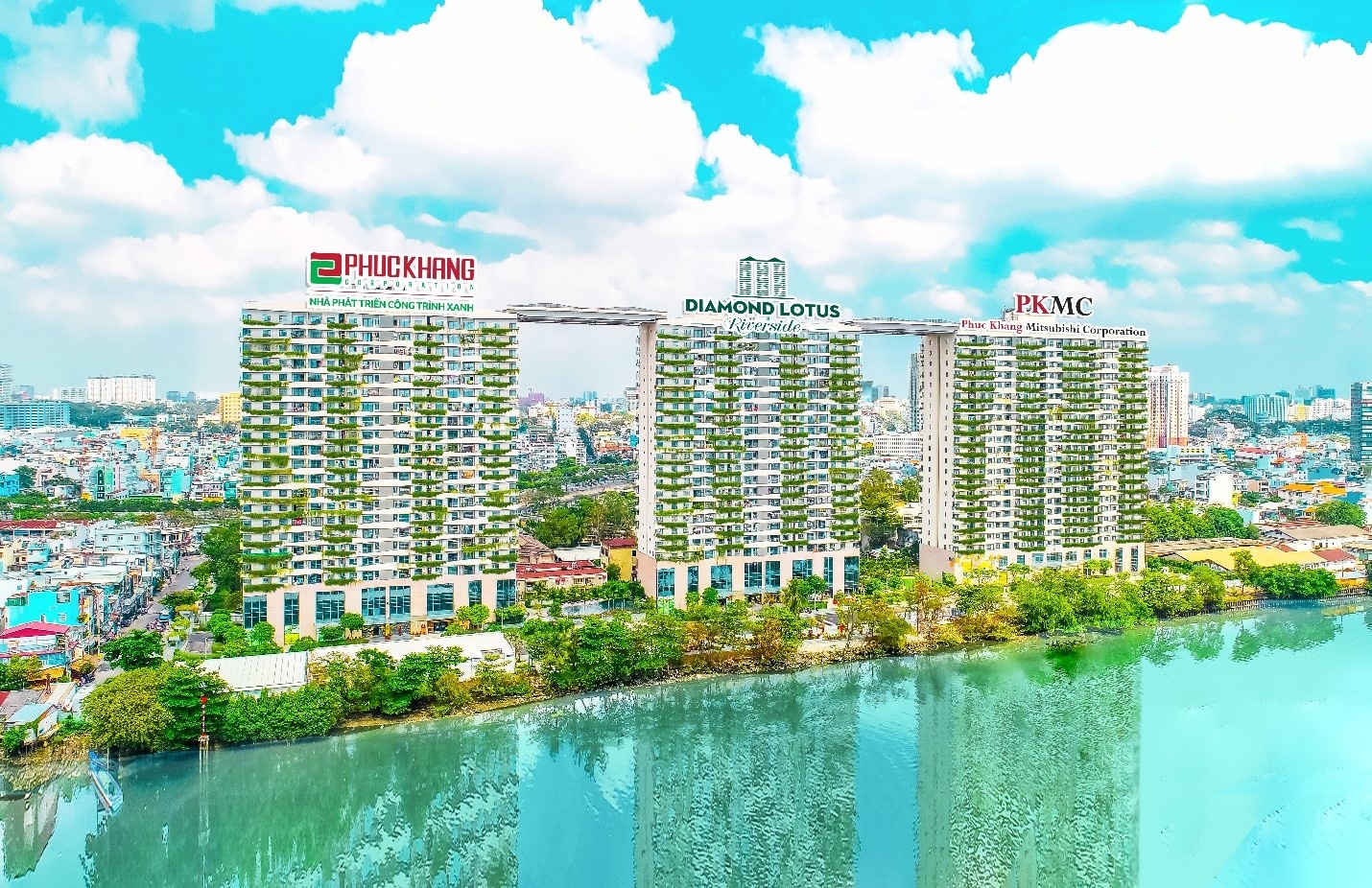 |
| Panoramic view of verdant, breezy, and nature-connected living space at Diamond Lotus Riverside high-rise apartment building. Photo Phuc Khang |
Green high-rise buildings ensure healthy living
Green buildings are the optimal solution for the National Housing Development Strategy. The materials for green buildings must not be harmful to human health and the environment. The Diamond Lotus Riverside uses glue and paint with low Volatile organic compound content to protect residents' health. Its door system includes glass frames and 3-layer Low-E glass to reduce noise from outside, provide anti-glare, and reduce heat accumulation inside the apartment.
The data at Diamond Lotus Riverside shared by CEO Luu Thi Thanh Mau is extremely positive in terms of ensuring health and living comfort. According to the World Green Building Council's Health and Wellbeing Framework, Diamond Lotus Riverside boasts 100 per cent living area with natural light, natural ventilation, outside views, as well as an irrigation system with recycled water.
Overall, it sees a 44 per cent reduction in energy consumption, and 35 per cent reduction in water use, and over 21 per cent of the landscape area helps limit the heat island effect, while 15.4 per cent of total roof area is planted with trees.
The project also boasts outstanding amenities such as a swimming pool, children's playground, outdoor public fitness area, gym, yoga room, GS25 supermarket, kindergarten, and luxury café.
Situated in a prime location, the project provides full social services, from a swimming pool to a school, market, and medical station. In the future, the investor will work with reputable partners to develop more macrobiotic restaurants and organic food stores to improve the health and quality of life of residents.
Green buildings like Diamond Lotus Riverside will set the trend in urban areas with sustainable development trends in Vietnam. Green buildings are also the optimal solution, in line with the National Housing Development Strategy. This type of real estate not only helps to minimise negative impacts on the environment but also brings long-term economic benefits.
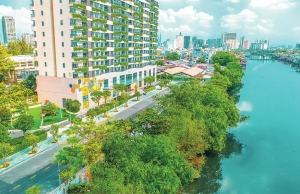 | A sustainable strategy in tune with global norms Green building developer Phuc Khang Corporation and its CEO Luu Thi Thanh Mau aspire to bring its brand to the global stage with merger and acquisition as well as sustainable development strategies |
 | Phuc Khang Corporation joins hands with Japanese businesses on green buildings Vietnamese entrepreneurs with a pioneering spirit should learn from experience and team up with foreign businesses to develop green buildings in Vietnam, helping to realise the government's net-zero commitment made at COP26. |
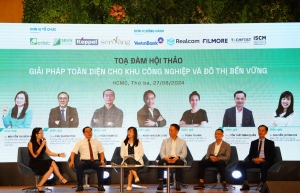 | More green buildings in Vietnam need to be realised Vietnam needs to construct more green buildings to achieve its emission reduction goals, instead of focusing on winning green building recognition certificates. |
What the stars mean:
★ Poor ★ ★ Promising ★★★ Good ★★★★ Very good ★★★★★ Exceptional
Related Contents
Latest News
More News
- The Kross ascends in Ho Chi Minh City's business heart (October 10, 2025 | 17:16)
- ESG-driven sustainability to define Vietnam’s green real estate (September 19, 2025 | 11:35)
- Tan Thuan Tower open for high value-added and innovative tenants (September 10, 2025 | 10:00)
- The new home of modern business at Hanoi's Starlake (August 19, 2025 | 08:00)
- Forum focuses on financial solutions for ESG in real estate (June 18, 2025 | 12:12)
- Frasers Property Vietnam moves towards green real estate leadership (May 08, 2025 | 11:25)
- Keppel collaborates with leading brands to enhance urban living in Vietnam (April 04, 2025 | 09:26)
- Strengthen partnership and efforts to promote zero energy buildings in Vietnam (February 26, 2025 | 17:31)
- Haus Dalat ESG real estate project holds opening ceremony (February 24, 2025 | 11:12)
- Best golfers awarded at Swing for the Kids 2024 (October 13, 2024 | 08:00)

 Tag:
Tag:





















 Mobile Version
Mobile Version